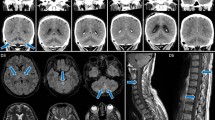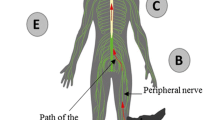Abstract
Infection of BALB/c mouse with protoscoleces of Echinococcus granulosus constitutes a model for the study of secondary hydatidosis and the associated immune response in immunization and infection trials. The aims of this study were to induce a protective immunity against secondary hydatidosis using conventional vaccination approaches and to analyse the immune responses that accompany this protection. Mice immunized with antigen B (AgB), a component of crude sheep hydatid fluid (CSHF), showed a significant level of protection as indicated by a 98.3% reduction in cyst load. This reduction in cyst development was accompanied by a high concentration of interferon gamma secreted by antigen-stimulated spleen cells, as compared with those secreted by cells of mice immunized with CSHF or protoscoleces homogenate (PSH) antigens. In contrast, interleukin-4 was significantly higher in the supernatants of cells stimulated with CSHF or PSH compared with AgB (191.5, 195.7 and 127.5 pg, respectively). Kinetic analysis of immunoglobulin subclasses showed persistently high levels of IgG1 and IgG2a subclasses in immunized infected animals until 6 months of infection, whereas IgG3 showed a significant decline after 1 month of infection. In infected non-immunized control mice, all IgG subclasses showed a gradual increase after the first month of infection until the experiment termination (8 months after infection).




Similar content being viewed by others
References
Baz A, Richieri A, Puglia A, Nieto A, Dematteis S (1999) Antibody response in CD4-depleted mice after immunization or during early infection with Echinococcus granulosus. Parasite Immunol 21(3):141–150
Bradford M (1976) A rapid and sensitive method of quantification of microgram quantities of protein utilizing the principle of dye binding. Anal Biochem 72:248–254
Dematteis S, Baz A, Rottenberg M, Fernandez C, Örn A, Nieto A (1999) Antibody and Th1/Th2-type responses in BALB/c mice inoculated with live or dead Echinococcus granulosus protoscoleces. Parasite Immunol 21:19–26
Dematteis S, Pirotto F, Marques J, Nieto A, Orn A, Baz A (2001) Modulation of the cellular immune response by a carbohydrate rich fraction from Echinococcus granulosus protoscoleces in infected or immunized Balb/c mice. Parasite Immunol 23(1):1–9
Dematteis S, Rottenberg M, Baz A (2003) Cytokine response and outcome of infection depends on the infective dose of parasites in experimental infection by Echinococcus granulosus. Parasite Immunol 25(4):189–197
De Rosa F, Dottorini S, Pauluzzi S (1977) Vaccination against experimental peritoneal hydatid disease of BALB/c mice with hydatid fluids and their fractions. Ann Sclavo 19:470–477
De Rycke P, Pennoit-de Cooman E (1973) Experimental secondary echinococcosis of Echinococcus granulosus. IV. Vaccination of host mice. Z Parasitenkd 42:49–59
Ferragut G, Nieto A (1996) Antibody response of Echinococcus granulosus infected mice: recognition of glucidic and peptidic epitopes and lack of avidity maturation. Parasite Immunol 18(8):393–402
Garvey BA, Wiley JA, Gigliotti F, Harmsen AG (1997) Protection against Pneumocystis carinii pneumonia by antibodies generated from either T helper 1 or T helper 2 responses. Infect Immun 65(12):5052–5056
Haralabidis S, Karagouni E, Frydas S, Dotsika E (1995) Immunoglobulin and cytokine profile in murine secondary hydatidosis. Parasite Immunol 17:625–630
Hernandez-Pomi A, Nieto A (1994) Induction of protective immunity against murine secondary hydatidosis. Parasite Immunol 16:537–544
Hernandez-Pomi A, Borras-Salvador R, Mir-Gisbert A (1997) Analysis of cytokine and specific antibody profiles in hydatid patients with primary infection and relapse of disease. Parasite Immunol 19:553–561
Leggatt GR, Yang W, McManus DP (1992) Serological evaluation of the 12 kDa subunit of antigen B in Echinococcus granulosus cyst fluid by immunoblot analysis. Trans R Soc Trop Med Hyg 86:189–192
McVie A, Ersfeld K, Rogan MT, Craig PS (1997) Expression and immunological characterisation of Echinococcus granulosus recombinant antigen B for IgG4 subclass detection in human cystic echinococcosis. Acta Trop 67(1–2):19–35
Moosa RA, Abdel-Hafez SK (1994) Serodiagnosis and seroepidemiology of human unilocular hydatidosis. Parasitol Res 80:664–671
Mosmann T (1983) Rapid colorimetric assay for cellular growth and survival: application to proliferation and cytotoxicity assays. J Immunol Methods 65(1–2):55–63
Oriol R, Williams JF, Miguela V, Esandi P, Oriol C (1971) Purification of lipoprotein antigens of Echinococcus granulosus from sheep hydatid fluid. Am J Trop Med Hyg 20(4):569–573
Ottesen EA (1995). Immune responsiveness and the pathogenesis of human onchocerciasis. J Infect Dis 171(3):659–671
Profumo E, Ortona E, Rigano R, Gioia I, Notargiacomo S, Ioppolo S, Siracusano A (1994). Cellular and humoral responses to antigenic subunits of Echinococcus granulosus cyst fluid in hydatid patients. Parasite Immunol 16(8):393–398
Rigano R, Perfumo E, Buttari B, Teggi A, Siracusano A (1999) Cytokine gene expression in peripheral blood mononuclear cells (PMNC) from patients with pharmacologically treated cystic echinococcosis. Clin Exp Immunol 118(1):1365–2249
Rogan MT (1998) T-cell activity associated with secondary infections and implanted cysts of Echinococcus granulosus in BALB/c mice. Parasite Immunol 20(11):527–533
Severi MA, Ferragut G, Nieto A (1997) Antibody response of Echinococcus granulosus infected mice: protoscolex specific response during infection is associated with decreasing specific IgG1/IgG3 ratio as well as decreasing avidity. Parasite Immunol 19(12):545–552
Touil-Boukoffa CB, Bauvois B, Sanceau S, Hamrioui B, Wietzerbin J (1998) Production of nitric oxide (NO) in human hydatidosis: relationship between nitrite production and interferon-gamma levels. Biochimie 80:739–744
Zhang A, Yang H, Yang Y, Qian Z (1998) Correlation between the dose and the anti-Toxoplasma effect of activated mouse macrophages induced by IFN-gamma and the synergism between IFN-gamma and TNF-alpha. Zhongguo Ji Sheng Chong Xue Yu Ji Sheng Chong Bing Za Zhi 16(6):436–440
Zhang W, You H, Zhang Z, Turson G, Hasyet A, McManus DP (2001) Further studies on an intermediate host murine model showing that a primary Echinococcus granulosus infection is protective against subsequent oncospheral challenge. Parasitol Int 50(4):279–263
Zhang W, You H, Li J, Zhang Z, Turson G, Aili H, Wang J, McManus DP (2003) Immunoglobulin profiles in a murine intermediate host model of resistance for Echinococcus granulosus infection. Parasite Immunol 25:161–168
Acknowledgements
The authors would like to thank Arwa Qaqish for technical assistance. This work received financial support from Yarmouk University Research Council.
All experiments in this study comply with the current laws of Jordan.
Author information
Authors and Affiliations
Corresponding author
Rights and permissions
About this article
Cite this article
Al-Qaoud, K.M., Abdel-Hafez, S.K. Humoral and cytokine response during protection of mice against secondary hydatidosis caused by Echinococcus granulosus . Parasitol Res 98, 54–60 (2005). https://doi.org/10.1007/s00436-005-0004-z
Received:
Accepted:
Published:
Issue Date:
DOI: https://doi.org/10.1007/s00436-005-0004-z




